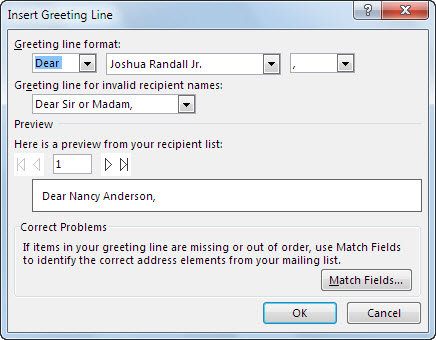

You cannot use your keyboard and mouse to navigate the Terminal. Therefore it’s important that you learn a few things that you should keep in mind when learning the Terminal. Navigating the Terminal might not be as straightforward as navigating a GUI application. Here, you can customize the appearance of the Terminal including the background color, text color, and font. In the preferences menu, navigate to the Profiles tab. While on Terminal, navigate to ‘Terminal’ on the top bar and select Preferences.

Changing the theme of the Terminal lets you do just that. First, it’s best if you adjust the appearance to fit you.
#ADDRESS BLOCK ON WORD FOR MAC MAC#
Type in the word Terminal and click on the first suggestion.Įither of these two methods will bring up the Mac command prompt and it will look like a black box as below.ĭepending on your Terminal setting, the appearance may look different. Push command and space buttons together to bring up the Spotlight Search bar. In Finder, navigate to the location of the Terminal application which is:Īn alternate method is from Spotlight Search.

There are several ways you can access Terminal. The Terminal application is in the Utilities folder in Applications. While you will not be a IT specialist right away by knowing your way around the Terminal, it’s the first step to becoming one - if that’s your goal. Once you grasp its basic functionality you can take on more complex tasks and when you do so, using the Terminal can be a lot of fun. It’s a quicker way of navigating the operating system, provided that you are familiar with the Terminal commands on Mac. While of course, it is not the case, knowing Mac Terminal commands will give you an upper hand in mastering the MacOS environment.Īs a Terminal emulator, it provides you with text-based access to the operating system. When using Terminal on Mac, it might look like you are trying to hack into a system. Thus, if you were to select that option with the example above, the effect would be to block all pages except those containing “justin bieber” or “kim kardashian” (not something I recommend, just for the record).Some MacOS users might be intimidated by the Terminal and its commands. If you want pages with the specified keywords to be allowed rather than blocked, you should select the option Treat keywords as allow-conditions rather than block-conditions under Advanced Options. If you want to block pages on any website that contain given keywords, you’ll need to use wildcards to specify all websites. This would result in pages on the sites and being blocked only when those pages contain the complete word “anteaters” or any word beginning with “crypto” or any word ending with “alicious” or the complete phrase “green eggs and ham”. So, for example, you could enter the following into the list of sites: Note that the keyword matching is case-insensitive (i.e., uppercase and lowercase are treated as equivalent). Within a keyword you can use an asterisk (*) to match any number of characters (except whitespace) and an underscore (_) to match whitespace. The tilde prefix (~) can be used to restrict blocking to sites that contain given keywords.


 0 kommentar(er)
0 kommentar(er)
